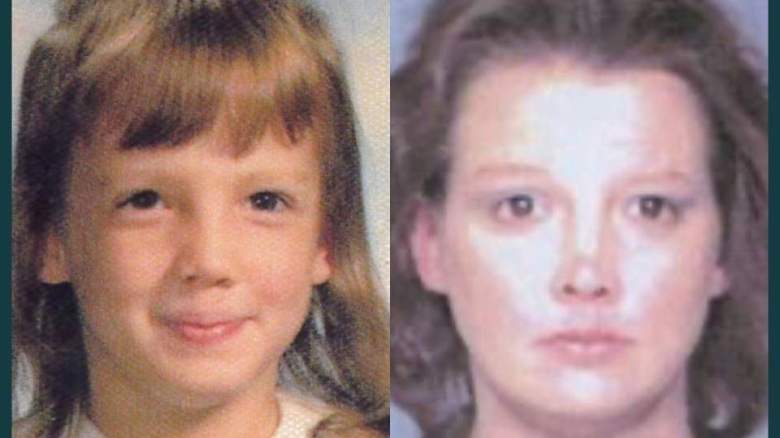
Facebook Mary Day
The 48 Hours episode airing on Saturday, May 2, explores the case of Mary Day, a 13-year-old girl who went missing in 1981. In this strange case, her parents did not report the young girl’s disappearance, and she wasn’t considered missing until her sister reported it in 1994.
Detectives working the case believed that William Houle, Mary’s stepfather, had killed the girl. In a shocking twist to this story, police came across a woman in Arizona who said she was Mary Day, decades after her initial disappearance. 48 Hours explores the appearance of this “Phoenix Mary” and the theory that she was an impostor in the episode titled “What Ever Happened to Mary Day?”
It’s a complex case with a lot of strange twists. Here’s what you need to know about the case of Mary Day’s disappearance:
1. Mary & Her 2 Sisters Had a Difficult Childhood & Lived in Foster Homes From a Young Age
Mary Day was born in Little Falls, New York, on February 19, 1968, to Charles Day and Charlotte Pressler. She was the first of three daughters born to the couple, after the birth of her sisters Kathy and Sherrie in the following three years. The three girls had a difficult childhood and were in and out of foster homes from a young age.
During one of the girls’ stints in foster care, Charlotte divorced Charles Day. She remarried, and her new husband William Houle enlisted in the Army. They had two kids together, Billie Jean and William Jr. In 1976, Charlotte gained custody of Mary and Kathy and took them out of foster care permanently. Sherrie, on the other hand, was adopted by her foster parents. Two years later, William Houle was deployed to a base in Hawaii and the family moved there.
Soon after, Charles died and left his daughters Mary and Kathy with his inheritance. Kathy said that she and Mary would discuss the inheritance using the code word “mohawk.”
In December 1980, while the family still lived in Hawaii, Mary was placed in protective custody after police said her stepfather started physically abusing the young girl. The following month, the family moved to Seaside, California, when William was reassigned there, leaving Mary in protective custody in Hawaii. She was released a few months later and rejoined the rest of the Houle family in California.
2. Mary Day Disappeared in 1981 But She Wasn’t Reported Missing Until 1994
In 1981, when she was 13 years old, Mary disappeared from the family’s home in Seaside, California, without a trace. Based on the CBS report, the last night Mary was seen was sometime in 1981. The family went out for dinner, leaving Mary at home. When they returned, William beat Mary, thinking she had poisoned the dog since it was sick.
Kathy said the next morning, Mary was gone without a trace. She said she asked her mother about Mary’s whereabouts and was told she’d run away and to never ask about her sister again. Sometime later, the Houle family moved again, this time to New York. Mary and Kathy’s sister Sherrie, who was by then Sherrie Calgaro, went to visit the family. She asked about Mary and was told by Charlotte that Mary ran away. Kathy told Sherrie, “We’re not allowed to talk about Mary.”
In 1994, Sherrie, who was now an adult, decided to file a missing persons report 13 years after Mary’s disappearance. In an interview, Sherrie said that Charlotte often talked about hiding bodies in California: “My mother told me there were many places in California you could bury a body and it would never be found. I started believing [Mary] was murdered.”
3. A Case Was Opened in 2002 & Detectives Investigated William Houle, Mary’s Stepfather
Although the missing persons report was filed in 1994, Seaside police only received the case in 2002, at which point they launched their investigation. Detectives went to the house where Mary went missing, accompanied by Kathy, who was by then known as Kathy Pires. Kathy showed Seaside Police Detective Joe Bertaina a corner of the backyard where her parents had told their kids not to play. The police brought in cadaver dogs to search the yard and all four dogs signaled the corner of the yard previously pointed out by Kathy. After a dig, the police found a girl’s shoe.
At this time, Charlotte and William Houle were both living in Kansas, and Charlotte spoke to the police in an interview. She told them repeatedly that Mary had run away. When they asked her why she hadn’t tried to find her daughter, she told them, “If she’s dead, she’s dead.”
William told police that when the family returned from their dinner the night Mary disappeared, he beat Mary, believing that she had poisoned his dog. He also said that he didn’t kill her, but a “demon” inside of him might have done it. The police’s suspicions toward the parents were mounting and they believed the case was a homicide. There was no trace of Mary anywhere, no IDs, no school records, arrests, no sign of her.
4. 22 Years After Her Disappearance, a Woman Appeared in Arizona Claiming to Be the Real Mary Day, But Police & Her Sisters Had Doubts
Only nine months after the police interviewed the Houles, a routine traffic stop in Phoenix, Arizona, changed the course of the investigation. The Phoenix Police Department pulled over a woman they believed was Mary Day, 22 years after her disappearance. Detective Bertaina traveled to Phoenix to meet the woman who was now being called “Phoenix Mary.” He told CBS that he spoke with her about her memories of her childhood, and she remembered certain things very vividly and others not at all.
Both detectives Bertaina and Steve Cercone had doubts about Phoenix Mary and whether she was the real Mary Day. They worried that they had an imposter on their hands, and ordered a DNA test. To everyone’s shock, the DNA test came back a match, indicating Phoenix Mary was truly the daughter of Charlotte Houle.
Once the DNA match was done, the police closed the case. Sherrie Calgaro invited Mary to live with her in North Carolina. However, her doubts about Mary’s identity grew after they started living together. Both detectives and Sherrie found Mary’s southern accent highly unusual since she hadn’t grown up in the south, and she had magazines addressed to a Monica Devereaux. Kathy also had doubts about Mary’s identity, and recalled that Mary couldn’t remember their inheritance left by their father or their code word “mohawk.”
In 2008, in a separate case, cadaver dogs signaled near a home in Seaside where the Houles had moved shortly after Mary disappeared. Steve Cercone hired a retired homicide detective, Mark Clark, to look into it. Clark told 48 Hours that he was sure a murder was committed and “Phoenix Mary” was an imposter.
5. In 2017, the Acting Chief of the Seaside Police Department Met With Mary to Get to the Bottom of the Story
Mary’s health was failing in 2017, and the acting chief of the Seaside Police, Judy Veloz, decided to travel to Mary’s house in Missouri to speak with her and get more information about the case. Mary told the police chief that after she ran away, she stayed with a woman named Morie Kimmel for a year, before running away again.
Veloz continued trying to piece Mary’s life together after she disappeared from Seaside. A photo from one of Kimmel’s relatives helped her close the case for good. The photo showed Mary, and it was dated at least a year after her disappearance.
The same year, Sherrie also visited Mary in Missouri, trying to put her doubts to rest once and for all. Afterward, she said she finally believed without a doubt that Phoenix Mary was her sister and not an imposter. Soon after these visits, Mary died.
READ NEXT: Chad Daybell’s Late Wife Tammy: Death Details & Update



